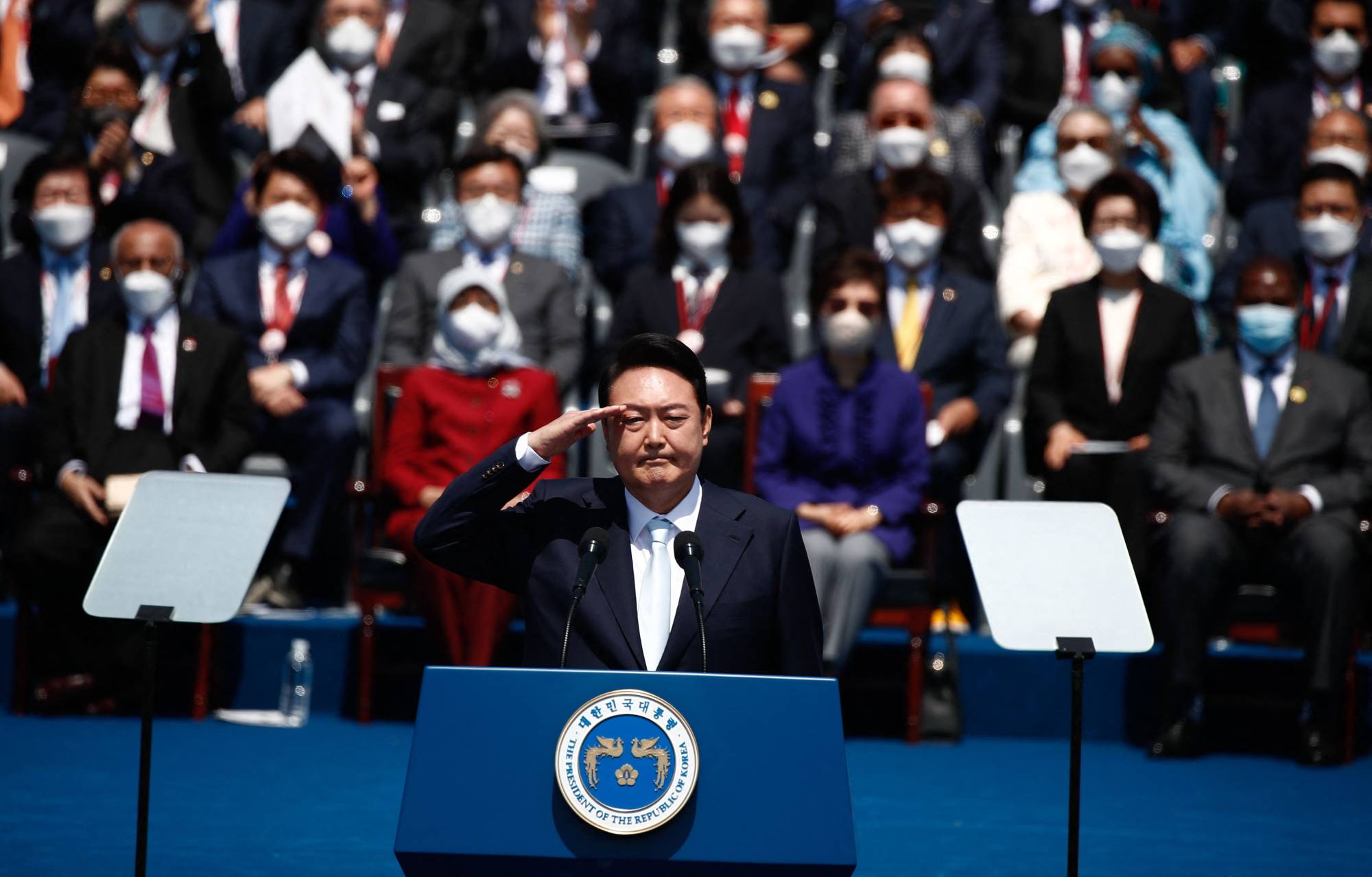New South Korean President Yoon Suk-yeol used his inauguration speech Tuesday to advocate for his country playing a larger role in the system of liberal democracies, deploying language similar to that used by Washington when it set out its vision for the Indo-Pacific region.
The pledge could put him on a collision course with China as Beijing’s rivalry with Washington heats up and Yoon looks to cement security ties with South Korea's ally the United States.
“It is incumbent upon us to take on a greater role befitting our stature as a global leader,” said Yoon, 61, before an estimated crowd of 41,000 in Seoul that included foreign dignitaries such as Japanese Foreign Minister Yoshimasa Hayashi and U.S. second gentleman Douglas Emhoff.


















With your current subscription plan you can comment on stories. However, before writing your first comment, please create a display name in the Profile section of your subscriber account page.